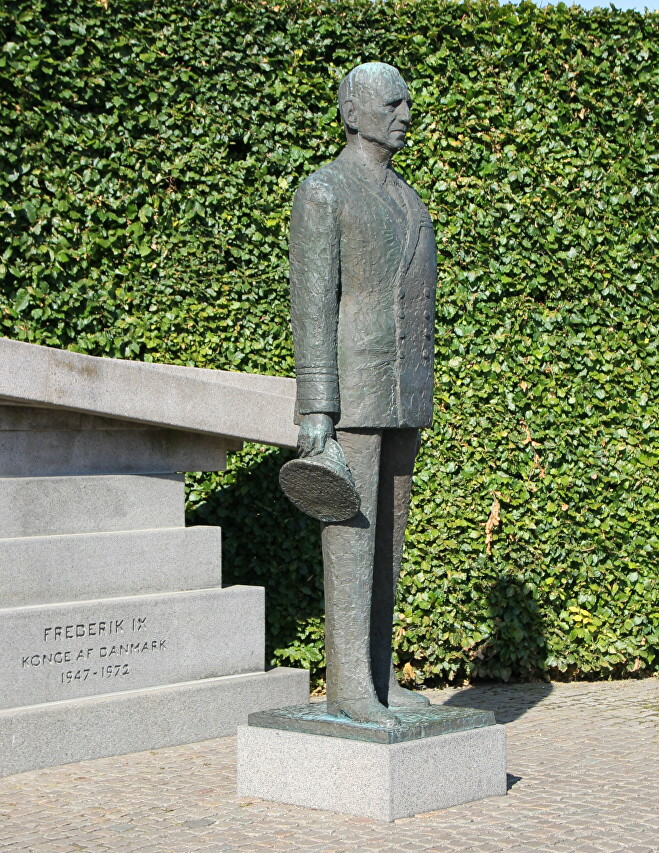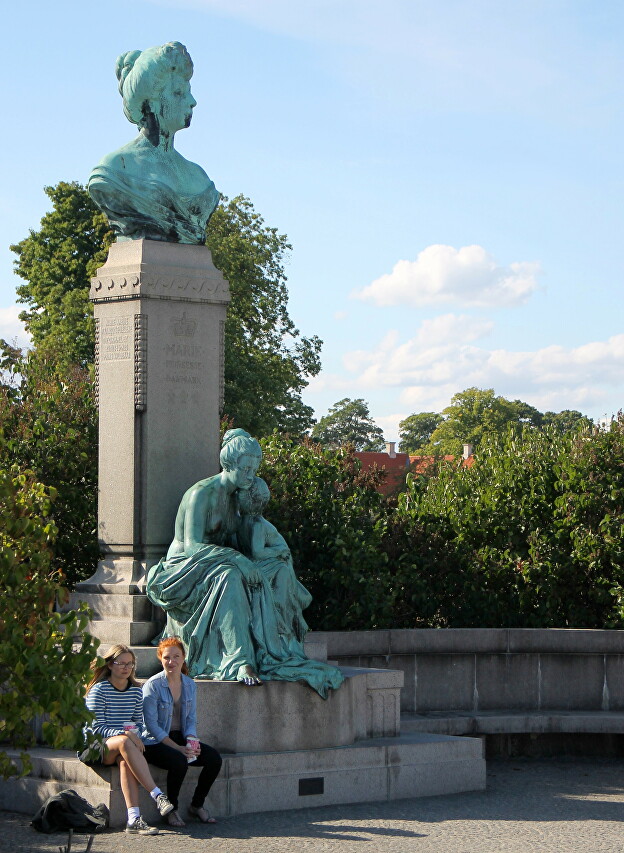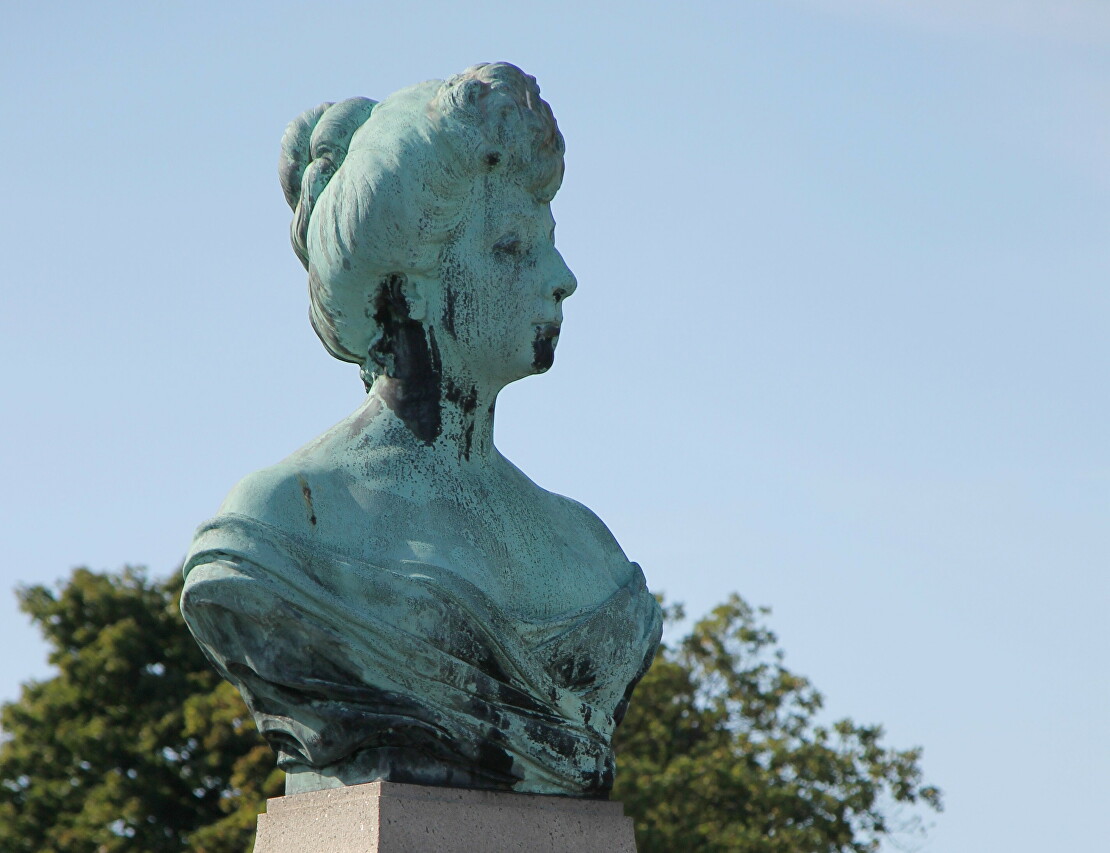Monuments to Frederick IX and Mary of Orleans, Copenhagen
The Gefion bridge leads to a small park located on the isthmus separating Inderhavn harbour from the moat of the fortress of Castellet. There are several monuments in the Park. Next to the bridge, you can see the monument to king Frederick IX (1899-1972). He is the last full-blooded dynastic king of Denmark since 1947. Having no sons, announced the successor to the eldest daughter, Margrethe II, by 1953 the law of succession, depriving it of the right of his younger brother, Prince Knud, extremely unpopular in Denmark.

A monument to Princess Marie of Orleans, known for her social activities in the early 20th century, is located 50 meters to the North. Marie (Princess Marie Amélie Françoise Hélène d'orléans, 1865-1909) was the daughter of the Duke of Chartres and Princess françoise of Orleans, born and spent her childhood in England, where her parents were forced to flee in 1848 from the persecution of Napoleon III, and returned to France only after his fall in 1871. In October 1885, Maria became the wife of Prince Voldemar, the youngest son of king Christian IX of Denmark. The couple's religion was different and the Princess did not change it after marriage, as a result of which four of their sons became Lutherans, like their father, and the daughter converted to Catholicism.

The couple settled In the Bernstorff castle and Maria was energetically involved in public life. The Princess was distinguished by her wit, independent character, and did not hesitate to publicly Express and defend her opinions. The people became popular once he became a patron of the Copenhagen fire Department. The Princess, despite her high status, was an equal friend of art people, loved to draw and photograph, participated in art exhibitions, and was a member of the Danish Academy of fine arts. In politics, Maria kept to the following principles: it actively promoted the ideas of parliamentarism and promoted the democratic reforms of 1901.
